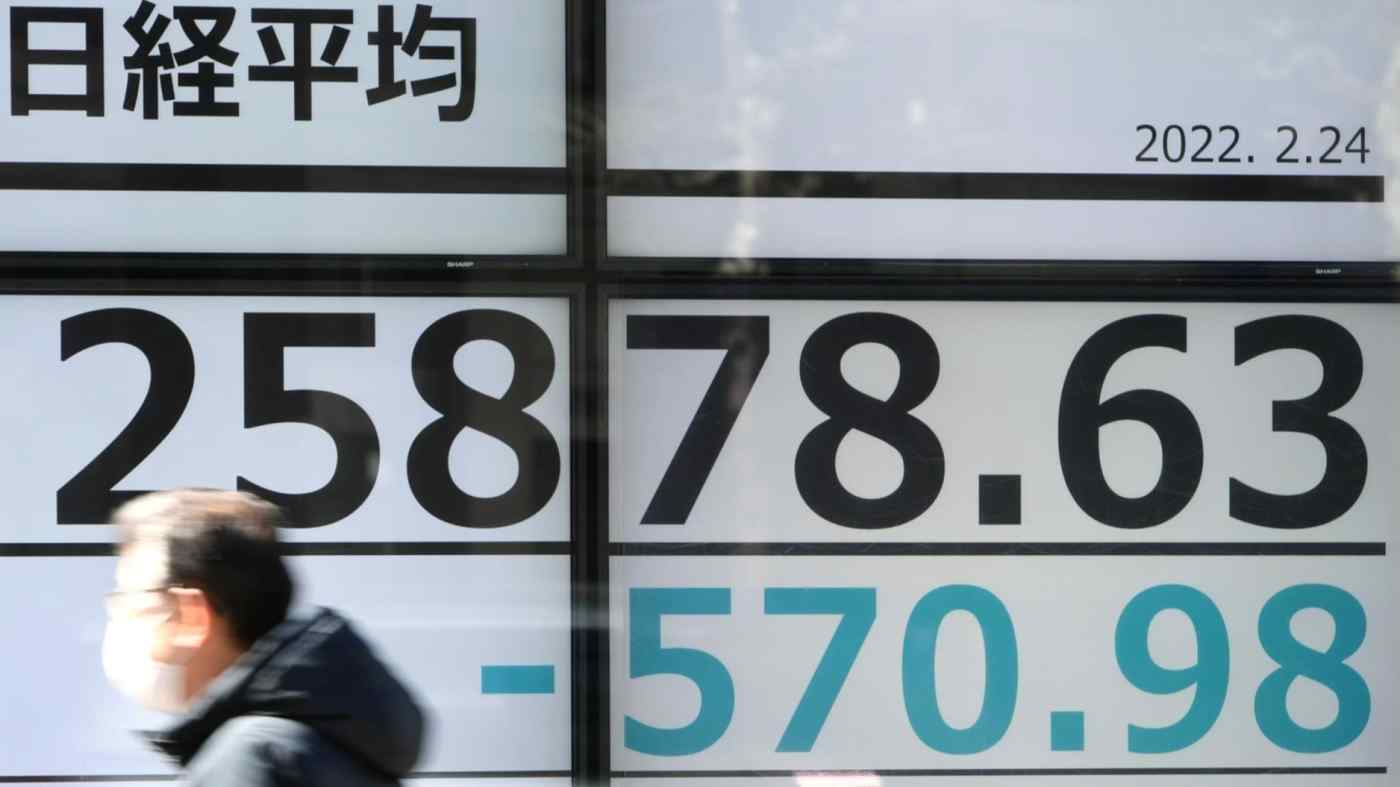Global stocks and US bond yields dived on Thursday, while the dollar, gold and oil prices rocketed higher after Russian President Vladimir Putin issued a blistering warning against Ukraine and authorized special military operations in Ukraine’s Donbass region.
Several explosions were heard in the Ukrainian capital, Kyiv, before dawn, after an initial series of sounds similar to artillery fire, a Reuters witness reported, shortly after Russia announced the military operation.
Putin called on Ukrainian soldiers to immediately lay down their weapons and go home, and said the responsibility for any bloodshed will be on the conscience “of the Ukrainian regime,” according to comments carried by Russian news agencies.
The comments worsened an already grim sell-off in Asian trade, pushing MSCI’s broadest index of Asia-Pacific shares outside Japan down more than 3%, with Australian shares off more than 3% and Chinese blue chips down 1.3%.
Tokyo’s Nikkei was 2.4% lower. US stock market futures were also down sharply, with S&P 500 e-minis down 2% and Nasdaq futures 2.5% weaker.
“The markets figure Russia will now do whatever it wants given how weak the sanctions were, and are pricing in an invasion,” said Ray Attrill, head of FX strategy at National Australia Bank.
“The real worry is that Europe is cut off from Russian gas. The EU couldn’t cope with such a supply shock and would have to rein in demand, which would be economically debilitating,” he added. “Higher energy prices are also where the rubber hits the road as far as global economic growth is concerned, that’s got to be bad for risk sentiment.”
As one of the worst post-Cold War security crises in Europe for decades worsens, U.S. Secretary of State Antony Blinken said he believed Russia will invade Ukraine within hours after separatists on Wednesday asked for Moscow’s help to repel “aggression” and as explosions rocked the breakaway eastern city of Donetsk.
Asset markets have seen a sharp increase in volatility over the deepening crisis, with oil racing to near $100 per barrel and the Cboe Volatility Index, known as Wall Street’s fear gauge, up more than 55% over the past nine days.
Brent crude futures, which seesawed between sharp rises and falls on Wednesday, resumed a climb toward $100 a barrel on Thursday, adding 1.22% to $97.98. West Texas Intermediate rose 1.32% to $93.32 per barrel.
Spot gold jumped more than 1.2% to $1,930.86, its highest since early January 2021.
US stocks took a beating, with the Dow Jones Industrial Average down 1.38% to barely above the level that would have confirmed a correction. The MSCI World Index, a leading gauge of equity markets globally, skidded to its lowest level since April 2021.
Investors have also been grappling with the prospect of imminent policy tightening by the U.S. Federal Reserve aimed at combating surging inflation, which NAB analysts say could be exacerbated by a commodities supply shock.
While expectations of an aggressive 50-basis-point hike at the Fed’s March meeting have eased, Fed funds futures continue to point to at least six rate hikes this year.
All the same, immediate geopolitical threats weighed on U.S. yields on Thursday, pushing the benchmark U.S. 10-year yield down sharply to 1.9165% from its US close of 1.977% on Wednesday. The 2-year yield also fell, to 1.5358% from a close of 1.6%.
The global flight to safety boosted the dollar, which jumped 0.267 against a basket of other major trading partners to 96.444.
The euro was down 0.38% on the day at $1.1266.
The Russian rouble turned lower, slipping 0.3% against the dollar after falling more than 3% on Wednesday.
The selloff spread to cryptocurrency markets, pushing bitcoin below $36,000 and to a one-month low of $35,197.44.
“Markets are now more adequately pricing in the risk of something horrific happening. That combined with the uncertainty is a horrible environment to be in. No one wants risk exposure when that’s floating around,” said Rob Carnell, head of Asia-Pacific research at ING.
Source: Agencies (edited by Al-Manar English Website)




